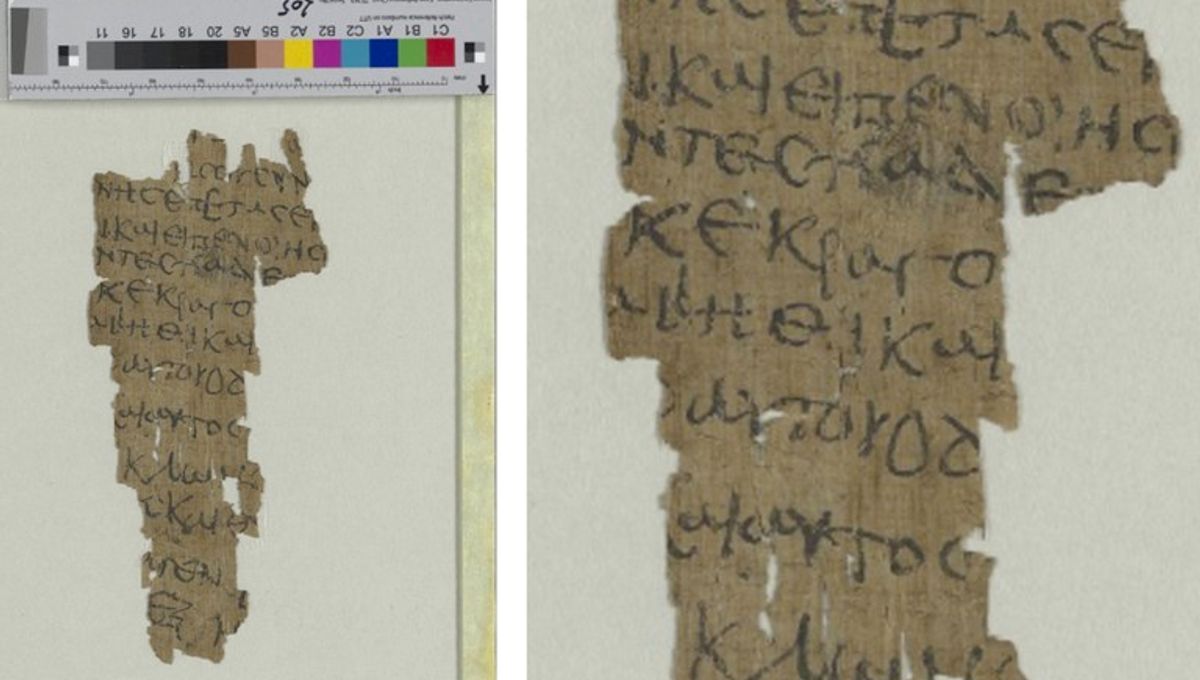


A team of academics has uncovered valuable insights into Roman legal proceedings through a newly discovered papyrus dating back over 1,880 years. The papyrus, named after Professor Hannah Cotton Paltiel who discovered it, reveals how the Roman empire handled financial crimes involving slaves in Judaea and Arabia. It is the longest Greek papyrus ever found in the Judean desert and sheds light on the prosecutors' notes and trial preparations before the Bar Kokhba revolt.
Ancient Papyrus Uncovers Insights into Roman Legal Proceedings
A team of academics has made a groundbreaking discovery of a papyrus dating back over 1,880 years, offering valuable insights into the legal proceedings of the Roman Empire. The papyrus, named the "Hannah Cotton Paltiel Papyrus" after its discoverer, reveals how financial crimes involving slaves were handled in the provinces of Judaea and Arabia.
Background
The papyrus was found in the Judean desert during an archaeological excavation led by Professor Hanan Eshel of Bar-Ilan University. It dates back to the 2nd century A.D., during the reign of Emperor Marcus Aurelius. At the time, Judaea and Arabia were under Roman rule and experienced significant economic growth and trade.
Contents of the Papyrus
The papyrus is the longest Greek papyrus ever found in the Judean desert. It consists of prosecutors' notes and trial preparations for a case involving financial crimes allegedly committed by slaves. The notes reveal details about the investigation, witnesses, and legal arguments that were being prepared before the actual trial.
Implications for Roman Legal History
The papyrus provides a rare glimpse into the practical workings of the Roman legal system in the provinces. It shows that the Romans were meticulous in their investigations and prosecutions, even when dealing with cases involving slaves. The papyrus also offers insights into the role of legal professionals and the importance of documentation in Roman legal proceedings.
Top 5 FAQs
1. What is the significance of the Hannah Cotton Paltiel Papyrus? It is the longest Greek papyrus ever found in the Judean desert and provides unique insights into the Roman legal system in the provinces.
2. What type of crimes are recorded in the papyrus? Financial crimes involving slaves, such as fraud, embezzlement, and theft.
3. How did the Romans handle legal proceedings involving slaves? The papyrus shows that they were meticulous in their investigations and prosecutions, even when dealing with cases involving slaves.
4. What does the papyrus reveal about the role of legal professionals in Roman society? It shows that legal professionals played a significant role in preparing cases and providing legal guidance to the prosecutors.
5. How does this discovery impact our understanding of Roman legal history? It provides valuable evidence for the study of Roman legal practices, especially in the provinces, and sheds light on the role of slaves in the Roman economy.

A metal detectorist in Westphalia, Germany has unearthed a one-of-a-kind find – a tiny gold lock that dates back to the Roman era. Measuring less than half an inch in diameter, this miniature version of a typical Roman lock was likely used to secure precious belongings. With the help of 3-D neutron computed tomography, archaeologists have been able to examine the lock's intricate inner workings, shedding light on its design and functioning. This remarkable discovery raises questions about the prevalence and significance of such precious miniature locks in Roman society.

The annual census of dolphins at Chilika lake in India's eastern state of Odisha has begun, with over 100 people participating in the three-day exercise. Equipped with specialized equipment, a team of retired government officials, researchers, students, and experts are counting the dolphins at India's largest brackish water lagoon. The census aims to track the population of the endangered species, which is listed on the International Union for the Conservation of Nature's Red List. Last year's data was not released due to adverse weather conditions, but in 2023, 173 dolphins of two species were found in the lake. The census is being carried out by the Chilika wildlife division in collaboration with the Chilika Development Authority.

* A team of scientists has developed a new algorithm for calculating the power function, making the process more efficient and accurate. This development could have far-reaching implications for fields such as engineering, physics, and economics, where power calculations are common. Using this new algorithm, researchers can now quickly and accurately determine power values, helping to advance their research and innovations. Furthermore, this method ensures that the resulting values are always non-negative, eliminating the need for post-processing.

As Maharashtra continues to battle against infectious diseases like HMPV and bird flu, health experts are now raising alarm over the rising cases of Guillain-Barre Syndrome (GBS) in several cities of the state. While some studies have linked GBS to the Oxford-AstraZeneca vaccine, others have refuted this claim. However, one thing is clear - GBS is a serious medical emergency that requires immediate treatment to prevent paralysis or even death. A doctor has also shared important tips on how to prevent foodborne illnesses, which can also be a cause of GBS.

In the animal kingdom, being an alpha male may seem like the ultimate achievement, but a new study shows that for baboons, it comes with intense levels of stress. Despite having dominance, respect, and first dibs on resources, these primates live in constant fear of losing their position and must guard their mates from rival males. This takes a toll on their physical and mental well-being, showing that being at the top is not as great as it may seem.

The city of Mumbai has been put on high alert by the Brihanmumbai Municipal Corporation following reports of Guillain-Barré Syndrome cases in nearby Pune. With Mumbai being at risk of potential cases, hospitals have been urged to be prepared with adequate ICU beds and ventilators. This comes as a precautionary measure to ensure the city is well-equipped to handle any potential outbreak.

The recent spike in Guillain-Barré Syndrome (GBS) cases in Pune, India has been attributed to contaminated water sources. Following the death of a Pune-based patient from GBS, the total number of cases in the city rose to 101, causing concern in the community. According to Dr Kaustubh Mahajan, a consultant neurologist, the GBS outbreak is likely due to the development of autoimmune confusion in patients after consuming water contaminated by gastroenteritis-causing bacteria. However, with the source of contamination now identified and treated, a decline in GBS cases is expected in the coming days.

NASA astronaut Don Pettit aboard the ISS amazed the world with his stunning photos of the Maha Kumbh Mela from space, providing a unique perspective on the largest gathering of humans on earth. These photos were taken as part of Pettit's renowned astrophotography and showcase the beautifully illuminated city of Prayagraj during the 45-day long event. With a staggering Rs 400 crore allocated by the Uttar Pradesh government for advanced infrastructure, the Maha Kumbh Mela is set to draw millions of devotees, saints, and tourists from around the world.

A man visiting Pune from Solapur, Maharashtra, has passed away, possibly due to complications from the rare Guillain-Barre Syndrome. This alarming case has raised concerns about the spread of the disease in the city and the need for swift preventative measures. Health officials are now investigating the circumstances of the man's death and potential exposure to the syndrome in Pune.